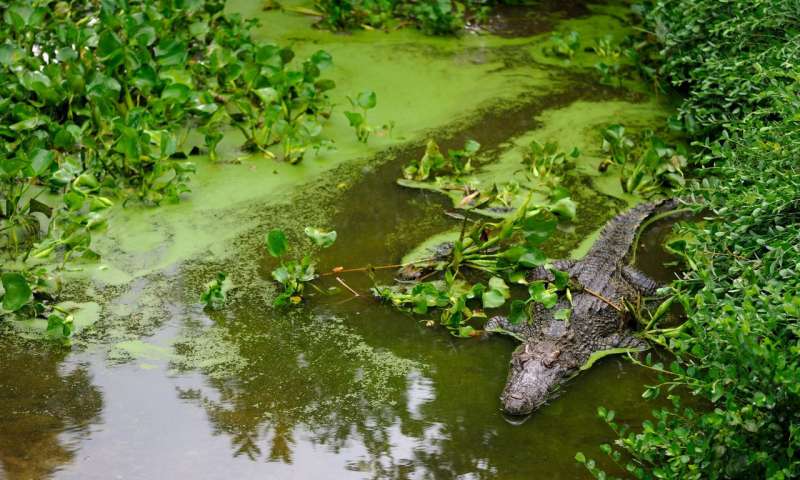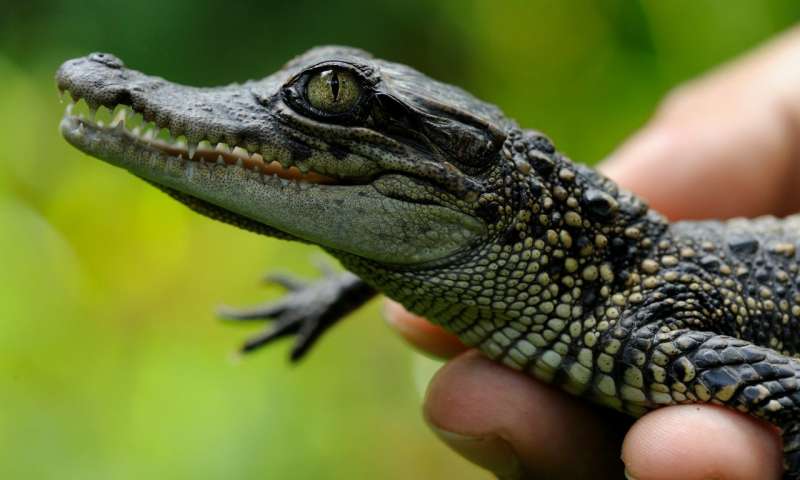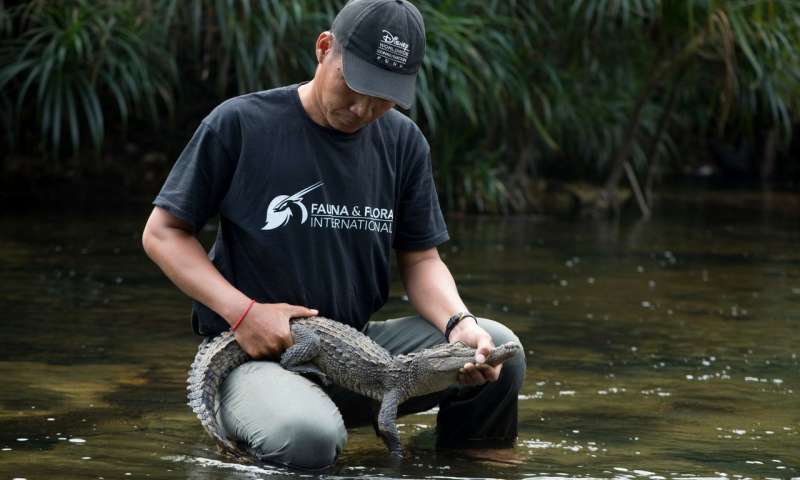Adult Siamese crocodile at Phnom Tamao Wildlife Rescue Centre. Credit: Jeremy Holden/FFI
As temperatures soar to record levels across much of the world, many people are complaining that it's hot enough to fry an egg outdoors. Thirty-degree heat may be too much for some, but for others it's just the ticket. Crocodile conservationists in Cambodia have been assiduously checking their own thermometers for the past few weeks, to ensure that it's hot enough to hatch an egg indoors – several clutches of eggs, to be precise. And their devotion as surrogate parents has just reaped spectacular rewards in the shape of 65 Siamese crocodile hatchlings.
The birth of these crocodiles – at a captive-breeding facility in Phnom Penh managed by Fauna & Flora International (FFI) in partnership with the Cambodian Forestry Administration – is a momentous event for one of the world's rarest reptiles. Given that the wild population is estimated at a mere 250 mature individuals, this represents a dramatic increase in numbers, and offers a vital lifeline for a species that is classified as Critically Endangered on the IUCN Red List.
Siamese crocodiles have disappeared from 99% of their original range and the species was widely believed to be extinct in the wild until its rediscovery during FFI-led surveys in the Cardamom Mountains. This remote area of Cambodia is the reptile's main stronghold, harbouring the majority of the global population, but even here there is very little breeding activity in the wild, not least because the populations are so small and fragmented. At best, surveys have recorded only one or two nests each year. The single wild nest discovered last year by Wildlife Conservation Society (WCS) staff was the first since 2013.
Baby Siamese crocodile in the hand. Credit: Jeremy Holden/FFI
In view of the constraints facing wild Siamese crocodiles, FFI launched a captive-breeding programme to catalyse the recovery of the species. The first individual to hatch successfully – from a 2012 clutch – was released into the wild in 2015; another clutch produced seven hatchlings in 2016. Since then, the programme has gone from strength to strength, and generous financial and technical support from a number of donors and collaborators – notably Lonnie McCaskill of WCS – has resulted in significant improvements in facilities and husbandry.
This year, the efforts of FFI and our partners have been amply rewarded; every single crocodile from two of the three clutches of eggs has hatched in the past few weeks, and the third clutch achieved a 90% success rate. All 65 of these baby crocs will be reared in captivity for up to three years until they attain one metre in length, at which point they will be big enough to fend for themselves and ready for release into strictly protected community crocodile sanctuaries.
Just as encouragingly, this year has also been the best in recent memory in terms of wild nests recorded, with a total of five already discovered. Significantly, four of these nests were found downstream from one of the sites where FFI has released a total of 38 pure-bred crocodiles as part of a national reintroduction programme launched in 2012. The last time any wild nests were found in this river system, prior to the one discovered last year by WCS, was 2004.
Releasing a juvenile Siamese crocodile into the wild. Credit: Jeremy Holden/FFI
According to Dr. Jackson Frechette, Flagship Species Programme Manager, "This is the culmination of 18 years of hard work by FFI and our partners to protect and restore Siamese crocodiles in this part of Cambodia. We've really built on that solid foundation and it feels as though we've turned a corner in our efforts to bring this species back from the brink. It's a perfect illustration of the fact that species recovery – more often than not – depends on long-term investment and vision on the part of conservationists, communities and donors alike."
This captive-breeding success is just the latest milestone in an ambitious long-term plan hatched by FFI. With support from its Species Fund, FFI is aiming to double the wild population of Siamese crocodiles by the year 2020.
Provided by Fauna & Flora International


























